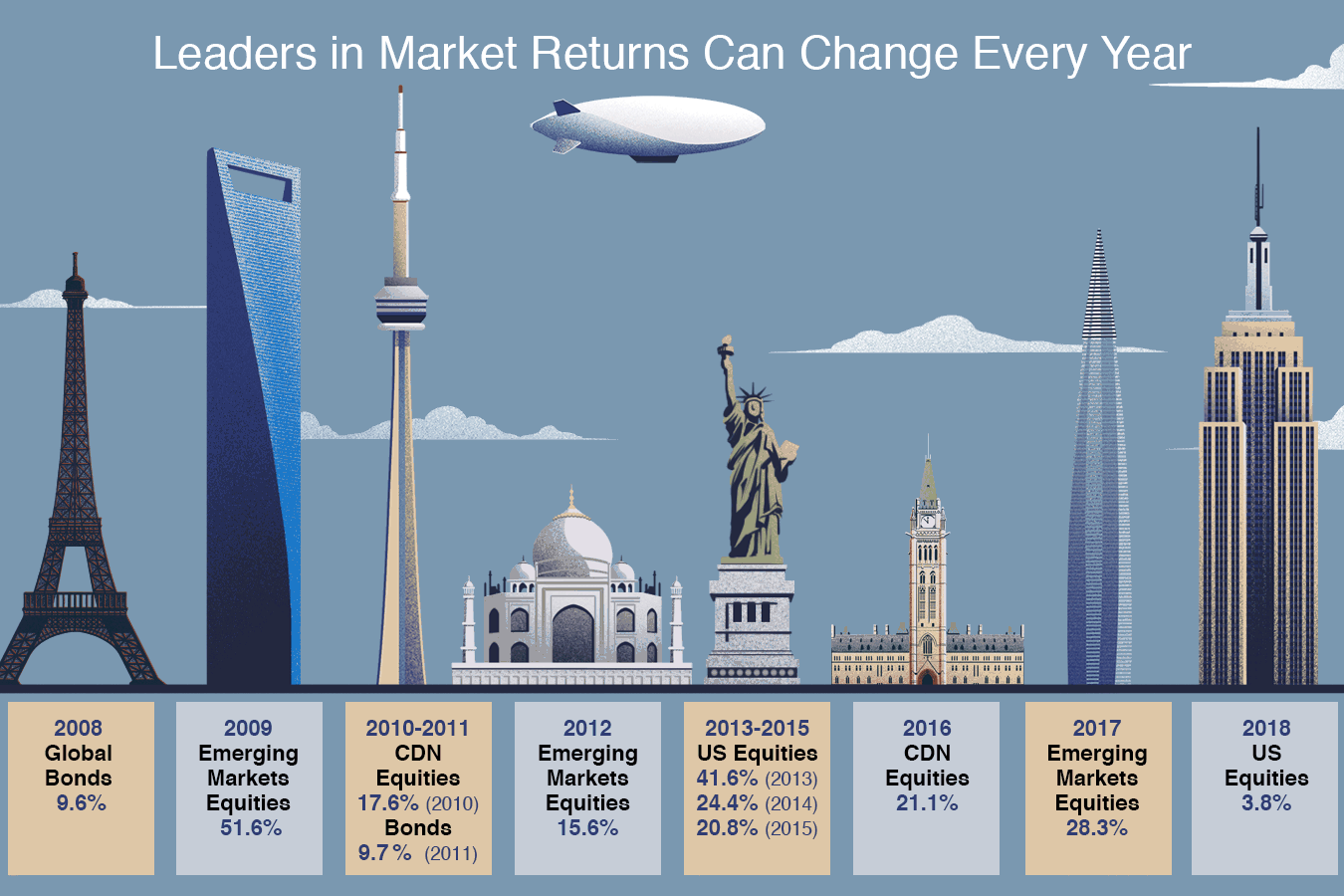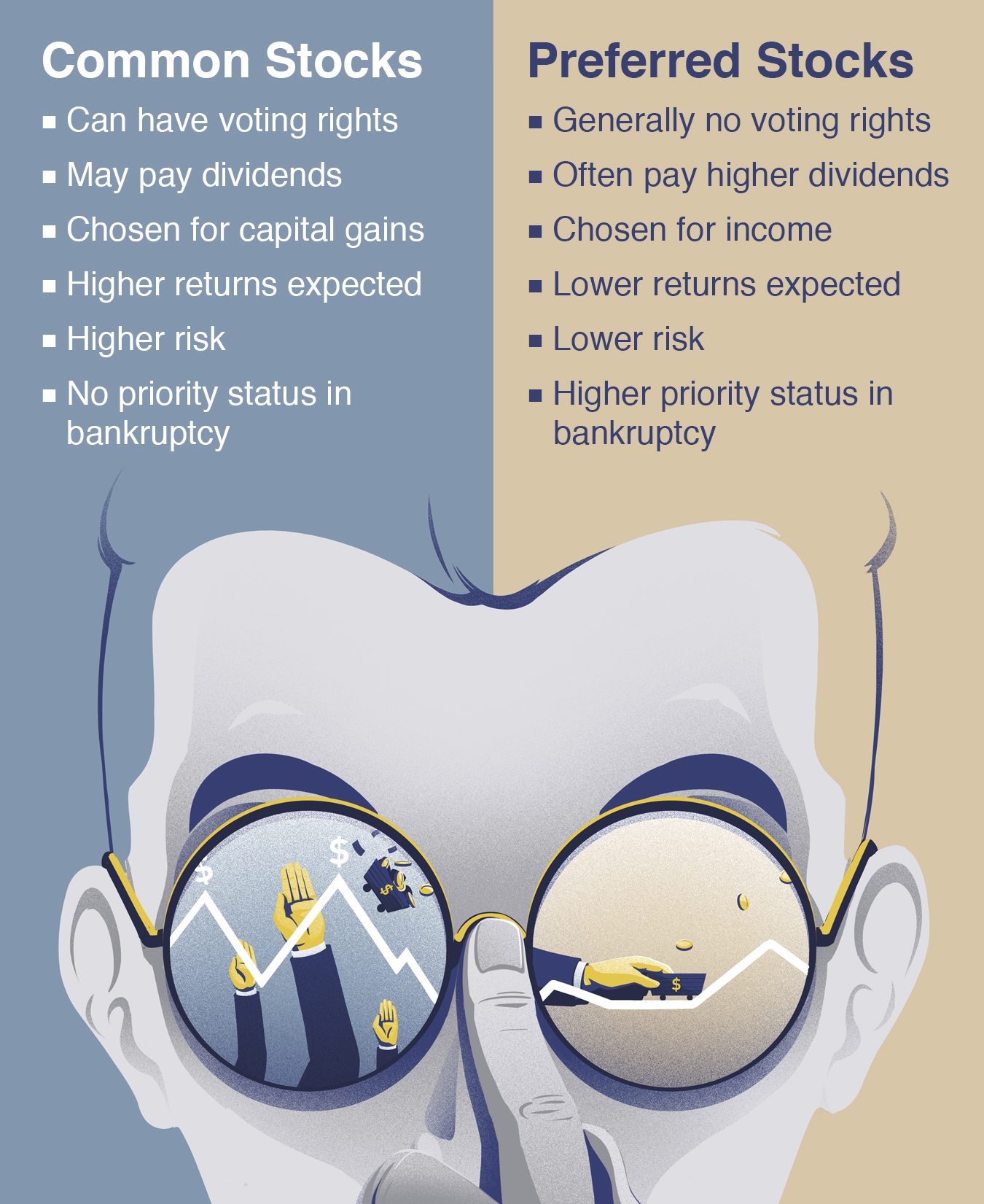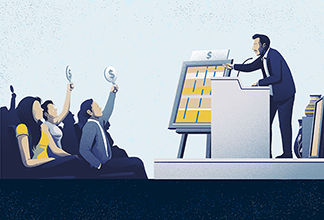Key Benefits of Investing In Stocks
Published on May 6, 2019
minute read
Share:
Stocks can be a valuable part of your investment portfolio. Owning stocks in different companies can help you build your savings, protect your money from inflation and taxes, and maximize income from your investments. It's important to know that there are risks when investing in the stock market. Like any investment, it helps to understand the risk/return relationship and your own tolerance for risk.
Let's look at three benefits of investing in stocks.
Build. Historically, long-term equity returns have been better than returns from cash or fixed-income investments such as bonds. However, stock prices tend to rise and fall over time. Investors may want to consider a long-term perspective for their equity portfolio because these stock-market fluctuations do tend to smooth out over longer periods of time.

Protect. Taxes and inflation can impact your wealth. Equity investments can give investors better tax treatment over the long term, which can help slow or prevent the negative effects of both taxes and inflation.
Maximize. Some companies pay shareholders dividends1 or special distributions. These payments can provide you with regular investment income and enhance your return, while the favourable tax treatment for Canadian equities can leave more money in your pocket. (Note that dividend payments from companies outside of Canada are taxed differently.)
Different Stocks, Different Benefits
The two main types of equity investments below can each offer investors different benefits.
1. Common shares
Common shares are the most (you guessed it!) common type of equity investment for Canadian investors. They can offer:
Capital growth. The price of a stock will go up or down over time. When it goes up, shareholders can choose to sell their shares at a profit.
Dividend income. Many companies pay dividends to their shareholders, which can be a source of tax-efficient income for investors.
Voting privileges. The ability to vote means shareholders have some measure of control over who runs the company and how.
Liquidity. Typically, common shares can be bought and sold more quickly and easily than other investments, such as real estate, art or jewellery. This means investors can buy or sell their investment for cash with relative ease.
Advantageous tax treatment. Dividend income and capital gains are taxed at a lower rate than employment income and interest income from bonds or GICs.
2. Preferred shares
Preferred shares can offer investors the following benefits:
Reliable income stream. Generally, preferred shares come with a fixed dividend amount that must be paid before any dividends are paid to common shareholders.
Higher income. Compared to common shares, preferred shares tend to pay higher dividends. (Note: preferred-share dividends come with the same advantageous tax treatment as dividends on common shares.)
Variety. There are many types of preferred shares, each with different features. For example, some allow for unpaid dividends to accumulate, while others can be converted into common shares.

The Advantages of Dividends
Dividends are a way for companies to distribute a portion of their profits to shareholders. Typically, dividends are paid in cash on a quarterly basis, although not all companies pay dividends. For example, companies that are still growing might choose to reinvest their profits back into their business to help grow it.

For investors, dividends can offer advantages in areas such as:
Returns. Receiving dividend payments on your stock can increase the total return on your investment.
Volatility. Dividends can help lower volatility by helping support the stock price.
Income. Dividends can provide investors with investment income.
Stability. Companies that manage their cash flow effectively tend to maintain consistent or growing dividend payments. Business stability and earnings growth often leads to a higher share price over time.
Taxation. Canadian dividends are taxed at a lower rate than interest income from bonds or GICs.
Example: This table shows how the after-tax yield of a dividend is higher than the after-tax yield of interest from a fixed-income product because of tax credits. This example uses the highest marginal tax bracket for an Ontario resident in 2018.
| Interest | Eligible Canadian Dividends | Capital Gains | |
| Gross capital gain | $1,000.00 | ||
| Included in income | $1,000.00 | $1,000.00 | $500.00 |
| Gross up (at 38%) | $380.00 | ||
| Total included in income | $1,000.00 | $1,380.00 | $500.00 |
| Federal taxes | $330.00 | $455.40 | $165.00 |
| Less federal dividend tax credit | (207.27) | ||
| Provincial tax (after provincial dividend tax credit) |
$205.30 | $145.31 | $102.65 |
| Total tax | $535.30 | $393.44 | $267.65 |
| After-tax amount | $464.70 | $606.56 | $732.35 |
| Marginal tax rate | 53.53% | 39.34% | 26.77% |
Fast Fact: Did you know that you can automatically reinvest your dividends?
You can choose to have RBC Direct Investing automatically reinvest the cash dividends you earn on eligible securities into shares2 of the same securites on your behalf. Read more about how a Dividend Reinvestment Plan (DRIP) works.
The information provided in this article is for general purposes only and does not constitute personal financial advice. Please consult with your own professional advisor to discuss your specific financial and tax needs.
RBC Direct Investing Inc. and Royal Bank of Canada are separate corporate entities which are affiliated. RBC Direct Investing Inc. is a wholly owned subsidiary of Royal Bank of Canada and is a Member of the Investment Industry Regulatory Organization of Canada and the Canadian Investor Protection Fund. Royal Bank of Canada and certain of its issuers are related to RBC Direct Investing Inc. RBC Direct Investing Inc. does not provide investment advice or recommendations regarding the purchase or sale of any securities. Investors are responsible for their own investment decisions. RBC Direct Investing is a business name used by RBC Direct Investing Inc. ® / ™ Trademark(s) of Royal Bank of Canada. RBC and Royal Bank are registered trademarks of Royal Bank of Canada. Used under licence.
© Royal Bank of Canada 2022.
Any information, opinions or views provided in this document, including hyperlinks to the RBC Direct Investing Inc. website or the websites of its affiliates or third parties, are for your general information only, and are not intended to provide legal, investment, financial, accounting, tax or other professional advice. While information presented is believed to be factual and current, its accuracy is not guaranteed and it should not be regarded as a complete analysis of the subjects discussed. All expressions of opinion reflect the judgment of the author(s) as of the date of publication and are subject to change. No endorsement of any third parties or their advice, opinions, information, products or services is expressly given or implied by RBC Direct Investing Inc. or its affiliates. You should consult with your advisor before taking any action based upon the information contained in this document.
Furthermore, the products, services and securities referred to in this publication are only available in Canada and other jurisdictions where they may be legally offered for sale. If you are not currently a resident of Canada, you should not access the information available on the RBC Direct Investing Inc. website.
Inspired Investor brings you personal stories, timely information and expert insights to empower your investment decisions. Visit About Us to find out more.










